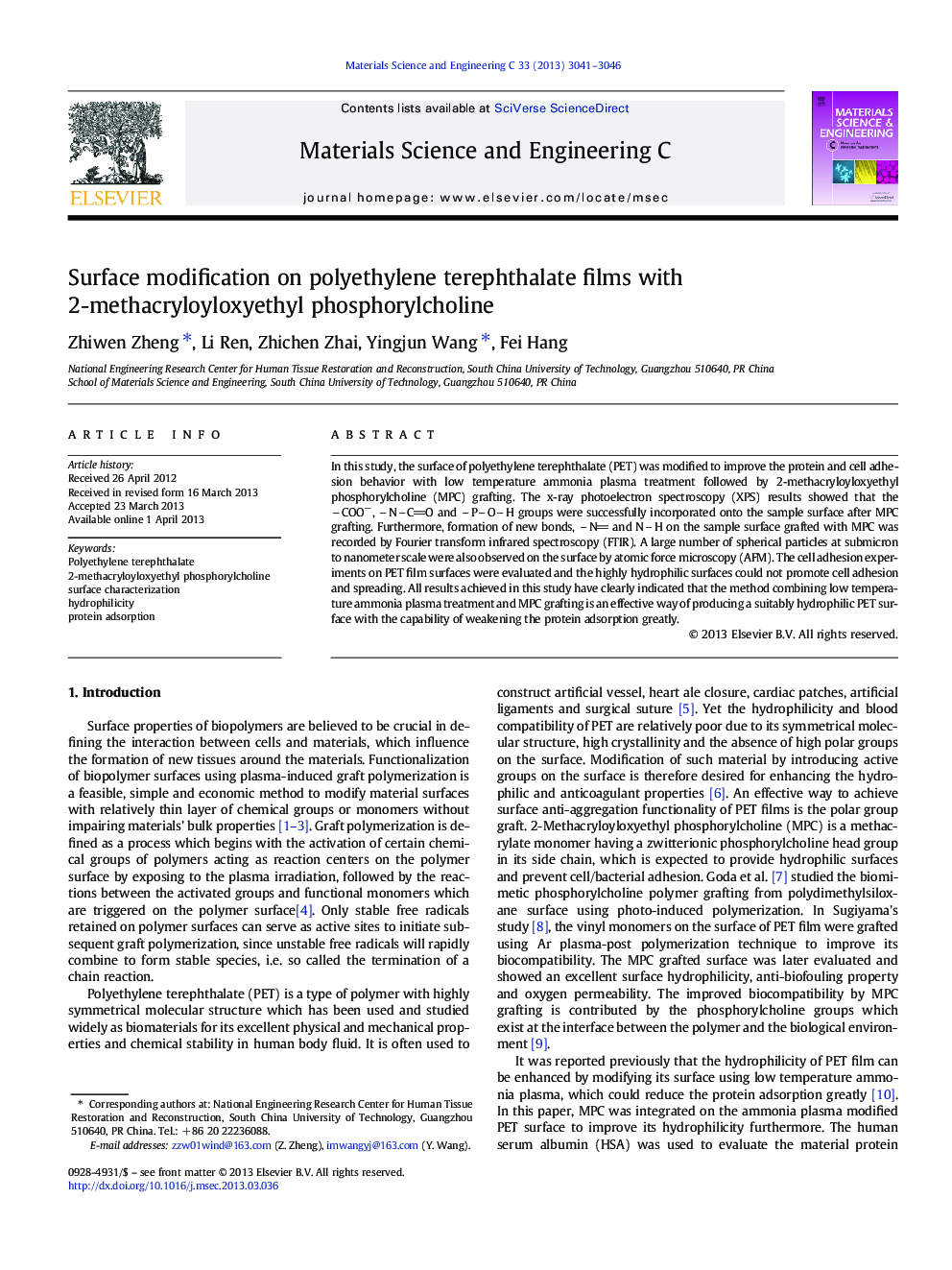| Article ID | Journal | Published Year | Pages | File Type |
|---|---|---|---|---|
| 10614698 | Materials Science and Engineering: C | 2013 | 6 Pages |
Abstract
In this study, the surface of polyethylene terephthalate (PET) was modified to improve the protein and cell adhesion behavior with low temperature ammonia plasma treatment followed by 2-methacryloyloxyethyl phosphorylcholine (MPC) grafting. The x-ray photoelectron spectroscopy (XPS) results showed that the COOâ, NCO and POH groups were successfully incorporated onto the sample surface after MPC grafting. Furthermore, formation of new bonds, N and NH on the sample surface grafted with MPC was recorded by Fourier transform infrared spectroscopy (FTIR). A large number of spherical particles at submicron to nanometer scale were also observed on the surface by atomic force microscopy (AFM). The cell adhesion experiments on PET film surfaces were evaluated and the highly hydrophilic surfaces could not promote cell adhesion and spreading. All results achieved in this study have clearly indicated that the method combining low temperature ammonia plasma treatment and MPC grafting is an effective way of producing a suitably hydrophilic PET surface with the capability of weakening the protein adsorption greatly.
Keywords
Related Topics
Physical Sciences and Engineering
Materials Science
Biomaterials
Authors
Zhiwen Zheng, Li Ren, Zhichen Zhai, Yingjun Wang, Fei Hang,
